 INTEGRAL Spacecraft, Launcher and Orbit
INTEGRAL Spacecraft, Launcher and Orbit
 INTEGRAL Spacecraft, Launcher and Orbit
INTEGRAL Spacecraft, Launcher and Orbit
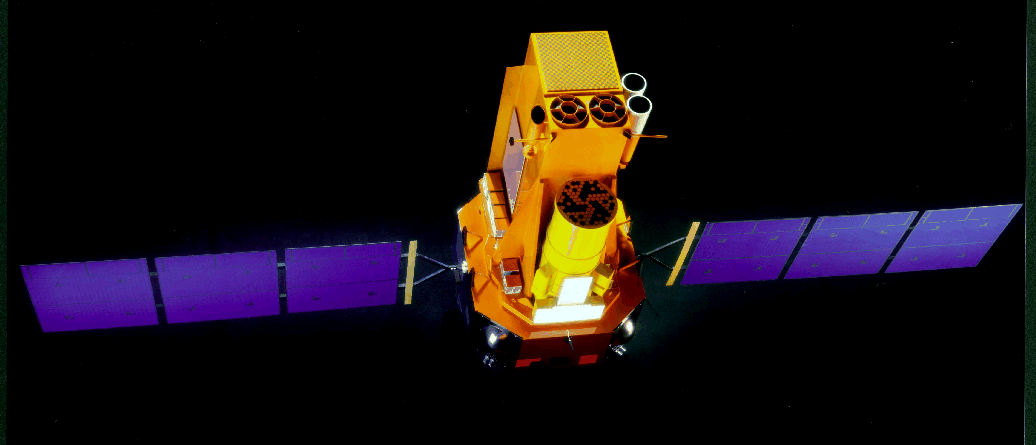

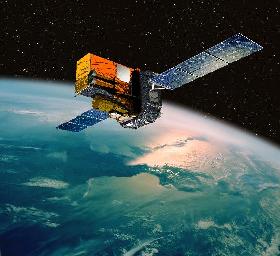
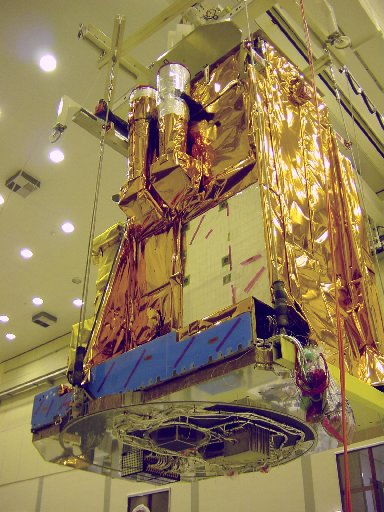
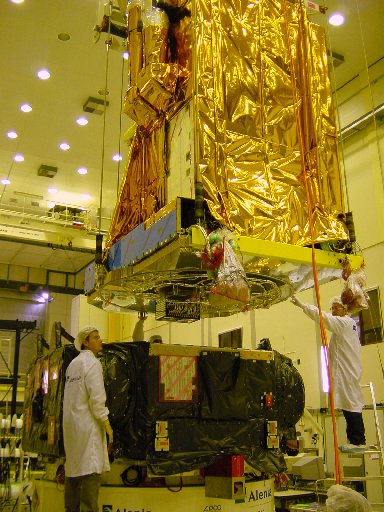
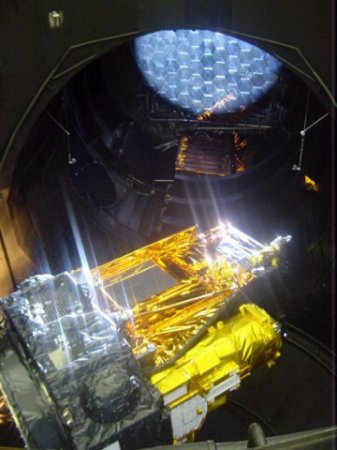
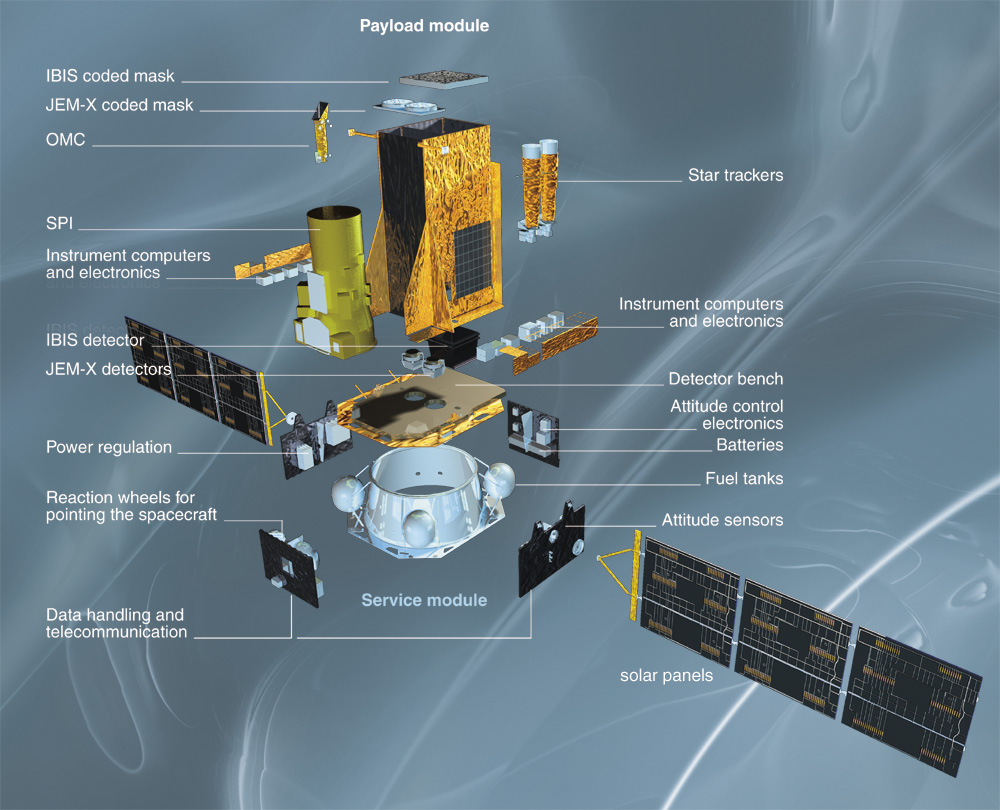
The spacecraft has been built under ESA contract by a large
industrial consortium, led by Alena Spazio (I) as prime contractor.
Pictures from the spacecraft during structural and thermal testing
(STM) in ESTEC (June/July 1998) can be found here:
Pictures of the payload module during STM testing:
Fig. 1,
Fig.
2,
Fig. 3,
Fig.
4.
The INTEGRAL Electrical Model (EM) during testing at Alenia/Italy
(Summer 1999)
is shown here.
First image from the Flight model can be found here.
Sequence of pictures showing the mating of the INTEGRAL FM payload
module and service module in ESTEC (August 2001)
Fig. 1,
Fig.
2,
Fig.
3,
Fig.
4,
Fig.
5,
Fig.
The spacecraft on the "shaker" just prior to vibration test on z-axis (September 2001).
Link to video showing: PLM/SVM mating, Transport to shaker, Vibration test on z-axis
The INTEGRAL Flight Model Spacecraft inside the ESTEC Large Solar Simulator (May 2002)
INTEGRAL spacecraft with instrument details.
More details on the launcher technical performance can be found here.
The Real-Time orbital elements and the current position of the satellite
can be found here.
(Courtesy of Heavens-Above GmbH)
In order to suppress systematic effects on spatial and temporal background variations in the spectrometer (SPI) detectors, a controlled and systematic spacecraft dithering ("raster-scan") manouevre is required. This manoeuvre shall consist of several off-pointings of the spacecraft pointing axis from the target in steps of 2 deg. Two different pointing patterns (modes) are foreseen as operational baseline: mode 1 consists of a hexagonal pattern around the nominal target location (1 source on-axis pointing, 6 off-source pointings, each 2 deg apart); mode 2 consists of a square pattern around the nominal target location (1 source on-axis pointing, 24 off-source pointings, each 2 deg apart). Mode 1 will be used for a single known point source, mode 2 for multiple point sources in the FOV, sources with unknown locations, and extended diffuse emission which can also be observed through combination ("mosaic") of mode 2 patterns. The integration time for each pointing on the raster shall be 2200 sec. The spacecraft will continuously follow one dithering pattern throughout one observation. If scientific requirements (i.e. observation proposals) exist to observe sources for long uninterrupted periods of time using all 4 instruments (e.g. for studies of time variability or QPO's) then the dithering modes can be switched off.